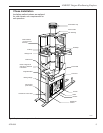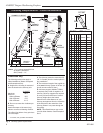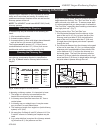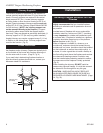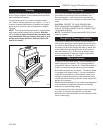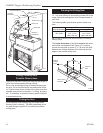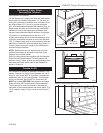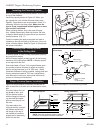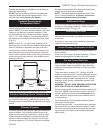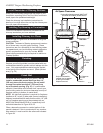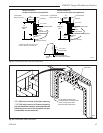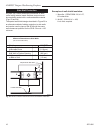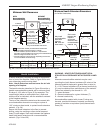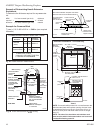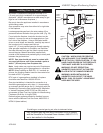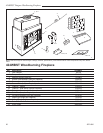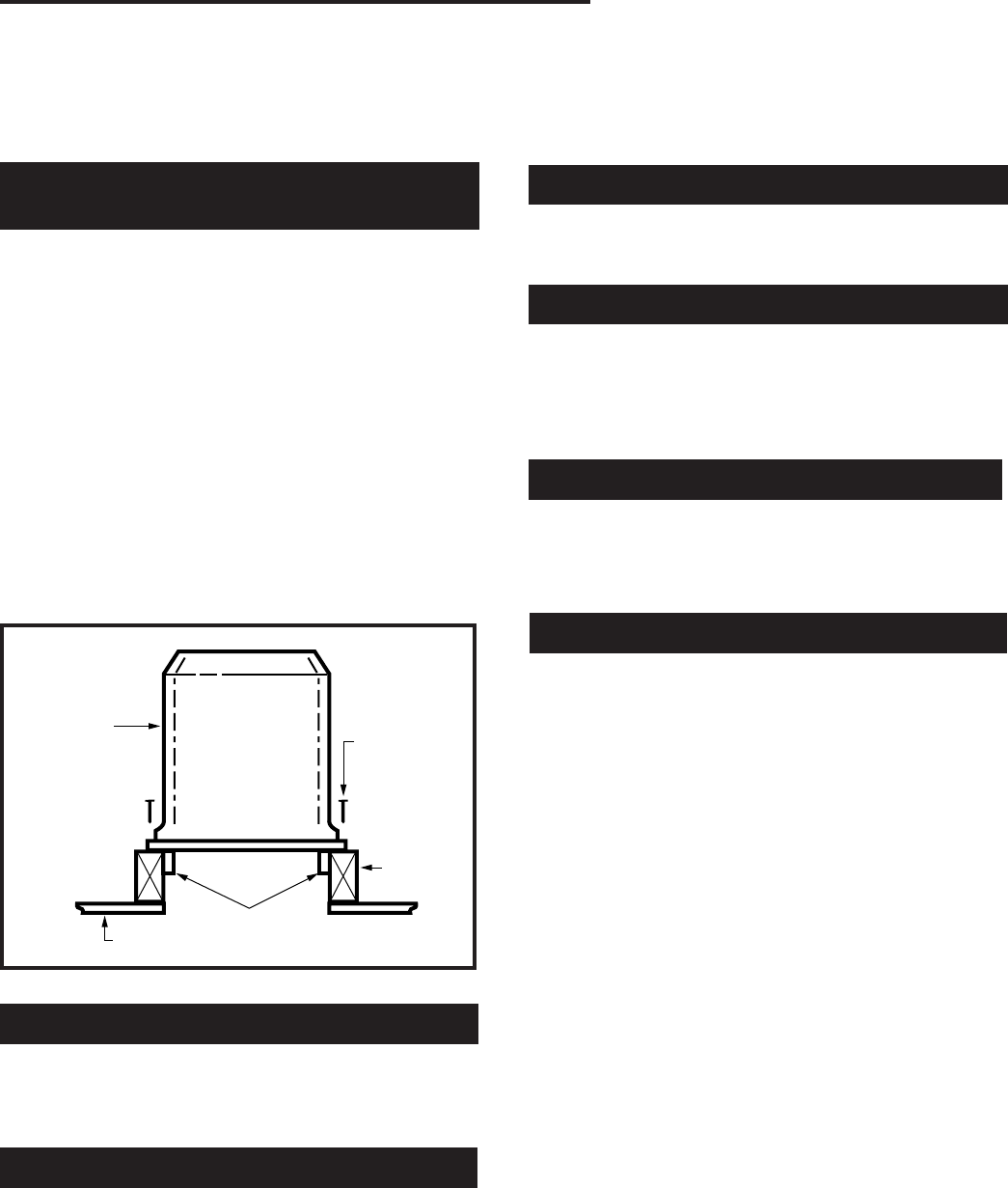
13
424WBST Designer Woodburning Fireplaces
87D1506
Consider this dimension when determining how many
straight chimney sections are needed.
Chimney supports are generally used in long
runs in a chase installation.
If you encounter additional ceilings, repeat same steps
required for first ceiling installation. Refer to firestop
illustration on Page 12, Figure 18.
Run pipe to roofline. Since chimney system must be
vented to the out-of-doors, you use an approved
termination.
If a chase is used, refer to the installation manual pro-
vided with the termination cap.
Use same procedure detailed in locating centerpoint of
the flue system.
Drive a nail up through roof at the centerpoint. This will
determine center point on outside of the roof.
Size of roof hole varies with the type of chimney termi-
nation installed. Refer to installation instructions pro-
vided with the chimney termination to find correct size
of roof hole.
There must be an air space (1Z\₂" (38 mm) with SK8
between outermost portion of chimney sections and any
adjacent combustible surfaces. (Fig. 20) (Combustible
surfaces include burnable materials such as: ceiling
members, joists, flooring, combustible insulation and
roof structures.)
Mark an outline of the roof hole around the center of the
point nail. Hole dimensions given in the chim-
ney top installation instructions are dimen-
sions; therefore, the hole size must be marked on the
roof accordingly.
Cover the opening of the installed chimney so debris
cannot get into the system.
Cut and frame the hole. It is good practice to use fram-
ing lumber that is the same size as the rafters. Install
the frame securely because the chimney top and flash-
ing anchored to the frame must be able to withstand
heavy winds.
Firestop spacers are not available for nor are they re-
quired on vertical walls.
put any sealant around the area where the
outer pipe slides through the firestop spacer. If you
seal this area,
In Canada, an attic insulation shield is required to
prevent attic insulation from contacting the chimney
section. If the attic insulation shield is used, the
firestop is not required in the attic installation. Fram-
ing dimensions for the chimney hole should measure
14Z\₂" x 14Z\₂" (368 x 368 mm). (An attic shield MUST
be installed on top of attic joists (above the floor level).
(Fig. 19)
In the U.S., it is a good idea, although not al-
ways required, to install an attic insulation shield where
blown-in insulation is planned to be used in the attic.
Install the attic insulation shield with the flanges on its
base extending down into the framing hole. Nail each
corner of attic insulation shield to the framing members
of the ceiling hole using 8d nails. Attic shields are not
required at the roof.
FP263
Attic shield installlation (Canadian requirement).
IGF263
MBUF
5/9/96
Attic Insula-
tion Shield
Nails
(4 required)
Attic Joist
Ceiling
Base
Flanges
Continue attaching pipe sections to complete system
to next level always being careful that the pipe is firmly
snapped locked in place before proceeding to next pipe
section.
If chimney supports are required, they are installed the
same as elbows. Nail chimney support straps to ad-
jacent structural framing, as shown on Figure 8, Page
8. Bend straps as necessary and make sure they are
secure so they will support the weight of the chimney.
A chimney support is 2Z\₂" (64 mm) long when installed.



